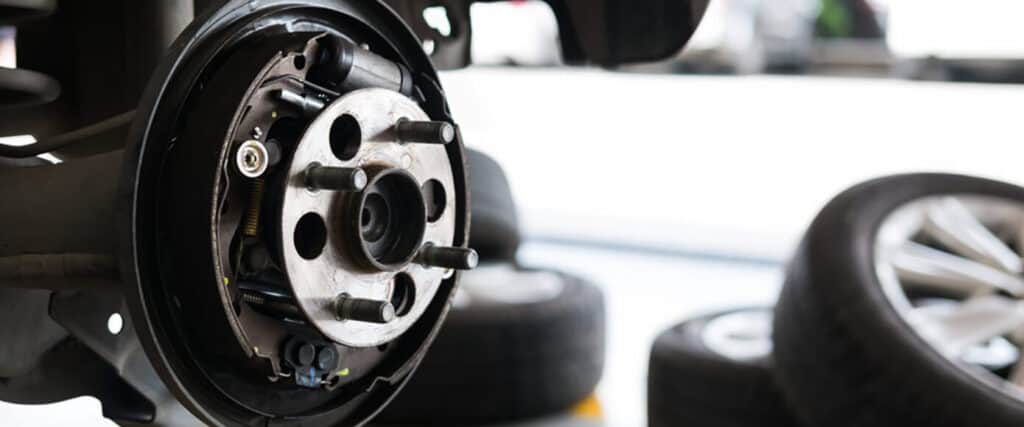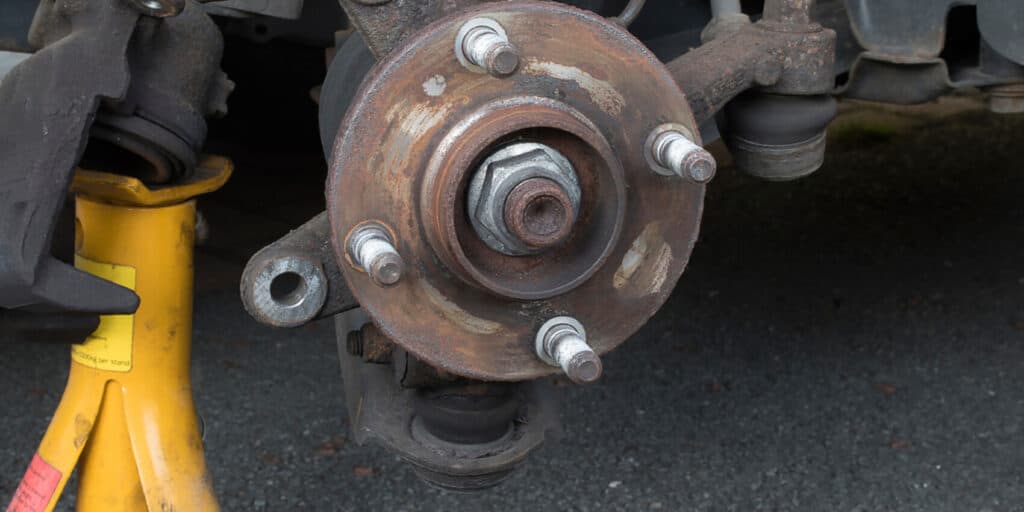Introduction
You feel a vibration through the steering wheel and realize something’s wrong. Your vehicle has a failing wheel bearing. The question is, what do you do now? This article offers a comprehensive guide on what to do when your wheel bearing fails while you’re on the road, how to spot the telltale signs of a bad wheel bearing, and the steps to take next.
Understanding Wheel Bearings: The Silent Heroes of Your Ride
Wheel bearings are often overlooked, yet they’re the silent heroes of your ride. They ensure your wheels rotate smoothly, absorbing heat and friction generated from your vehicle’s weight and the force of turning corners. A failing wheel bearing can jeopardize your driving comfort, but more importantly, it can also pose safety risks, making it crucial to understand their importance and take immediate action when they start showing signs of wear and tear.

The Warning Signs: How to Identify a Bad Wheel Bearing?
Knowing how to identify a bad wheel bearing can save you from potential danger on the road.
• Humming or Growling Noises: One of the earliest signs of a bad wheel bearing is the presence of unusual sounds. These may manifest as humming or growling noises that increase in intensity as you accelerate. This noise can often be mistaken for road noise. However, if you notice the humming or growling sound changes pitch or becomes louder when your vehicle changes direction, it’s a clear indication that your wheel bearing may need attention.
• Increased Vibration and Uneven Tire Wear: A faulty wheel bearing can cause your wheels to vibrate excessively. You may notice this vibration in the steering wheel or the seat, and it may become more pronounced as you pick up speed. Alongside this, uneven tire wear is another red flag. If your wheel bearing is failing, it can cause your wheel to tilt slightly, leading to rapid or uneven tire wear. So, make it a habit to check your tires regularly for any abnormal wear patterns.
• Loose Steering Wheel: Wheel bearings are essential for precise steering. When they begin to wear out, the steering wheel might start to feel loose or unresponsive, particularly when making turns. This lack of responsiveness not only affects your driving comfort but also poses a safety risk. If your steering feels less precise than usual, it’s crucial to get your wheel bearings inspected by a professional immediately.
The Risky Ride: Can You Drive with a Failing Wheel Bearing?
Driving with a bad wheel bearing is a risky gamble. In the best-case scenario, you could make it to your destination with your vehicle handling poorly. In the worst-case scenario, the wheel bearing could seize or even break while driving, leading to a loss of control over your vehicle. So, if you suspect a bad wheel bearing, it’s always safest to have it inspected and replaced as soon as possible.
The Lifespan of a Wheel Bearing: How Long Can You Drive on a Bad One?
• Playing with Fire: Wheel bearings might not scream for attention like other car parts, but neglecting them could lead to serious consequences. Driving on a failing wheel bearing can lead to catastrophic failure, leaving you stranded on the road or worse, leading to a dangerous loss of control over your vehicle. So, the question isn’t how long you can drive on a bad one, but how quickly you can get it fixed.
• Repair over Risk: The mantra when dealing with wheel bearings should be ‘repair over risk’. Even if a bad wheel bearing might not cause immediate problems, the risk associated with a potential failure is simply too high to ignore. Remember, your safety and the safety of others on the road is paramount. Hence, if your wheel bearing shows signs of trouble, don’t delay – get it checked out and replaced as soon as possible.
The Cost Factor: How Much Does It Cost to Replace a Wheel Bearing?
The cost to replace a wheel bearing can vary depending on the make and model of your vehicle and whether you need to replace a front or rear bearing. On average, you can expect to spend between $300 and $400, including parts and labor. It might seem expensive, but considering the role of wheel bearings and the potential risk of neglecting them, it’s a cost well worth bearing.
The Replacement Dilemma: Is It OK to Replace Just One Wheel Bearing?
• Balanced Wear and Tear: Wheel bearings on the same axle often have similar life spans due to comparable exposure to loads and road conditions. Therefore, if one fails, the other is likely not far behind. Replacing both bearings ensures balanced wear and tear, prevents premature failure of the un-replaced bearing, and saves you from the inconvenience and potential dangers of another bearing failure in the near future.
• Professional Consultation is Crucial: It’s worth noting that while replacing bearings in pairs is generally advisable, it may not always be necessary, especially if the other bearing is in good condition. This is where professional consultation becomes invaluable. A skilled mechanic can assess the condition of your bearings and guide you on the best course of action. Always make sure to take their advice into account before making a decision.

The Repair Time: How Long Does It Take to Change a Wheel Bearing?
The time it takes to change a wheel bearing depends on the type of vehicle you have and the degree of damage to the bearing. However, typically, it can take about 2 to 4 hours per wheel. This might seem lengthy, but remember, it’s a task best left to professionals as it requires specialized tools and skills.
Conclusion
In conclusion, the key to tackling the unexpected on the road lies in understanding your vehicle and its various components, like the wheel bearings. Stay alert for any warning signs, and never ignore them. Remember, a smooth, safe ride is always better than a risky one. So, keep your wheel bearings in check, and they’ll ensure you stay on track.
